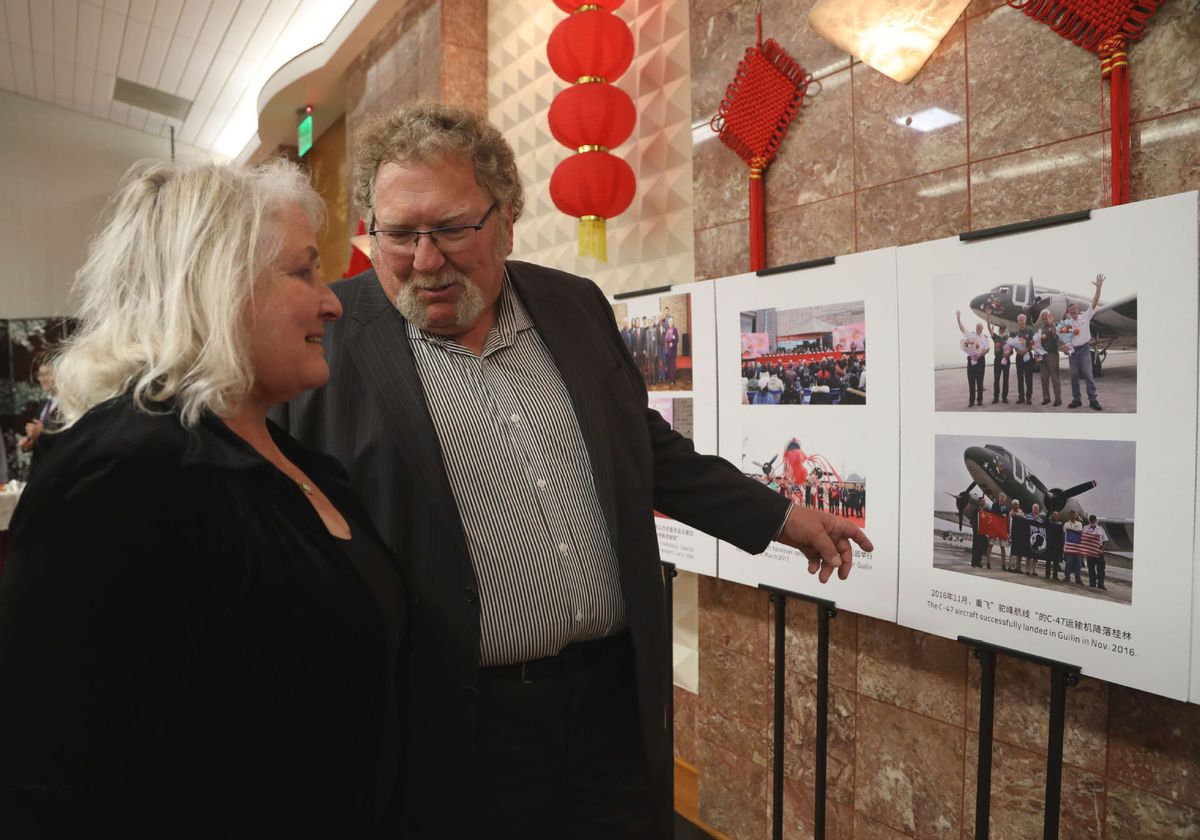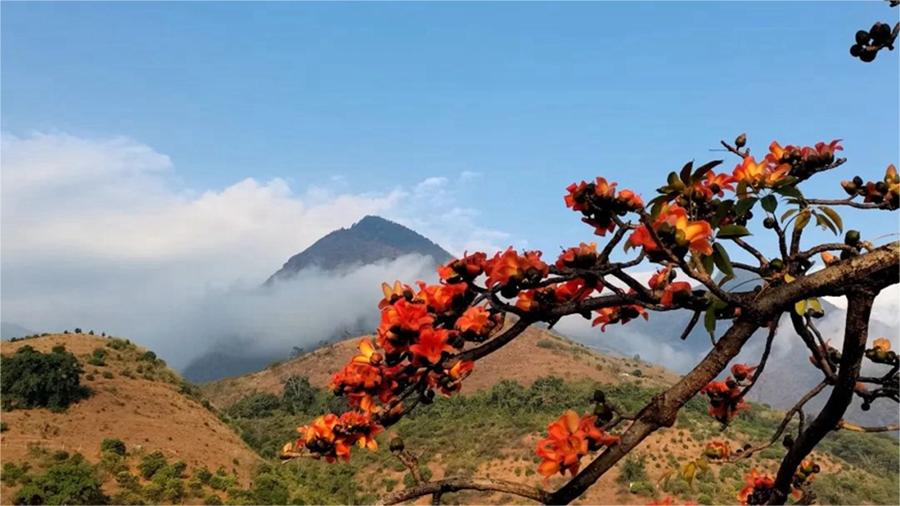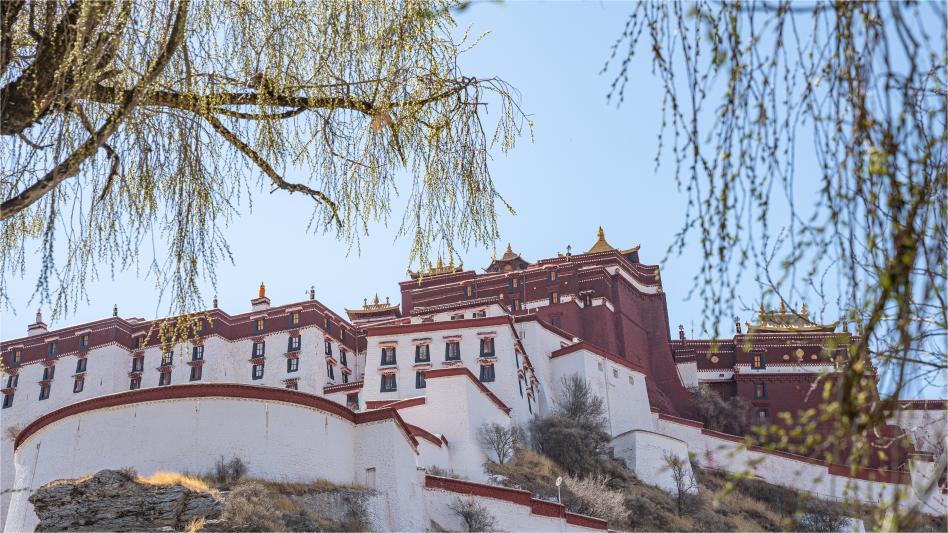Deep bonds in history remembered

People visit the Sino-American Friendship in Guangxi photo exhibition in San Francisco on Tuesday. LIU YILIN/XINHUA
At a gathering in San Francisco, Larry Jobe, a passionate advocate for preserving the Flying Tigers' legacy, opened the flight jacket he was wearing, revealing a "blood chit", a lifesaving promise from Chinese civilians to help downed US airmen.
The memento served as a reminder at the event, co-hosted by the Chinese Consulate General in San Francisco and the government of the Guangxi Zhuang autonomous region on Tuesday, of the deep bond forged between the United States and China against their common enemy during World War II.
Imagine after being shot down, "if you were picked up by either Chinese military or civilians, your chances of getting back to your base alive would be 95 percent — almost a guarantee", Jobe, president of the California-based Flying Tiger Historical Organization, told the audience, including Chinese and US officials and community leaders, at the Chinese consulate.
This remarkable statistic was not a coincidence. It was a testament to the extraordinary courage of Chinese villagers who risked their lives to protect downed US airmen, and the "blood chit" represented a symbol of that sacrifice.
The event was not just about remembering the past, but also about bridging it to the present. A photo exhibition at the event showcased the Flying Tigers' activities and their profound connection with the Chinese people in Guangxi, the region that housed the Flying Tigers' command post.
Guangxi Vice-Chairman Liao Pinhu emphasized the Flying Tigers' pivotal role in shaping the China-US relationship. Their bravery in transporting supplies over the treacherous "Hump" route and carrying out bombing missions against Japanese targets earned them the lasting respect of the Chinese people, Liao said.
The Guilin Flying Tigers Heritage Park and Museum in Guilin, Guangxi, stands as a permanent tribute to their wartime contributions, where artifacts and historical documents are meticulously preserved.
In October, the Flying Tiger Historical Organization donated relics belonging to General Claire Lee Chennault, a pivotal figure in the Flying Tigers' history, to the Chinese museum.
Jobe said the "crowning achievement" of its 18-year partnership with the Guilin museum was the 2016 delivery of a C-47 aircraft to the museum.
The restored military transport plane and its journey to Guilin mirrored the perilous "Hump "route navigated by pilots during the war.
The Hump was what Allied pilots called the eastern end of the Himalayas, as they flew military transport aircraft from India to China to supply the Chinese war effort and units of the US Army Air Force based in China.
Unwavering support
Engine failures necessitated repairs, and without the unwavering support and friendship of the Chinese people, particularly those in Guangxi, success wouldn't have been possible, said Jobe.
Jobe himself flew the restored C-47 with another pilot, a daring 96-day journey from Australia, where the plane was purchased, to Guilin. Now, the plane is on permanent display at the Guilin museum.
"We can best honor the past by ensuring its accurate portrayal," Jobe said.
The Guilin museum chronicles the sacrifices made by both Allied troops and the Chinese people, and it offers a window into the past, allowing future generations to learn from the horrors of war and the power of cooperation, he added.
Becca Prowda, director of protocol for California Governor Gavin Newsom, highlighted people-to-people exchange as the cornerstone of California's relationship with China.
The governor's recent trip to China further emphasized the commitment to fostering cultural and personal connections. "Since the governor's trip to China in October, we have also been uplifting our efforts to support cultural exchange, and people-to-people exchange," she said.
Photos
Related Stories
- China reprimands US for economic bullying over semiconductor restrictions, warning of global supply chain disruption
- A forced economic ‘de-coupling’ between US and China could be too costly: Ambassador Xie Feng
- China urges U.S. to stop suppression of TikTok
- Commentary: "China card" no cure for America's ills
- U.S. fund manager buys up Chinese debt
- Interview: China on track to achieve objectives, says U.S. scholar
Copyright © 2024 People's Daily Online. All Rights Reserved.









